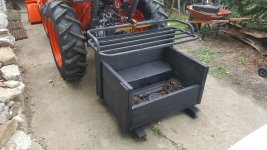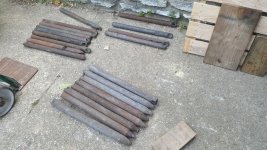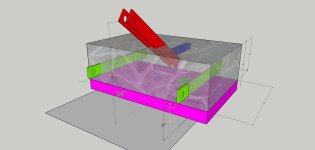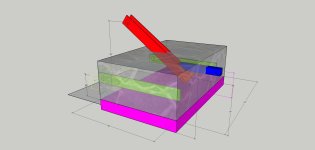CoyPatton
Veteran Member
- Joined
- Aug 10, 2015
- Messages
- 1,597
- Location
- Poplar Bluff, MO
- Tractor
- Yanmar YM2002D with Koyker 110 FEL
This is not entirely correct, as the term 'power' is being incorrectly substituted for 'rotational input speed'. Power is the rate at which work is done, and in the context of a tire the same amount of power can be delivered by a small tire (lower torque with higher speed) as a large tire (higher torque and lower speed).
There is no standard definition of 4x4 vs 4WD (4-Wheel-Drive) vs MFWD (Mechanical-Front-Wheel-Drive; primarily used by John Deere) vs FWA (Front-Wheel-Assist). FWA originally referred to the ability for the front wheels to be hydraulically driven to assist when additional traction was needed, and the driving speed was not linked to the rear tires in any way. In general, 4x4, 4WD, and MFWD are all used to refer to drive systems in which the front and rear tires are mechanically coupled (a locked center differential, or no differential at all) to produce approximately the same travel speed (not necessarily the same wheel speed).
"Lead/Lag" refers to the difference in speed between the front and rear tires. Most systems are designed with 2-4% front wheel lead because when turning the front tires travel farther than the rear tires, so a slight lead helps minimize binding in the drive train. (There is also a benefit to having the front pulling versus the rear pushing when traveling in a straight line) For a simple example, our tractor will have rear tires with a circumference of 4 and front tires with a circumference of 2. As part of the drive train the manufacture will gear the tractor differential so that the front tires spin 2.1 times the speed of the rear tires. This means each time the rear tire makes one revolution and travels a distance of 4, the front tires will have made 2.1 revolutions and traveled a distance of 4.2 (a 5% greater distance).
AWD (All-Wheel-Drive) refers to systems that have a center differential that allows the front and rear tires to turn at different speeds instead of being locked together. This allows the systems to be used on pavement and other hard surfaces without creating binding and excessive wear. AWD is primarily used in passenger vehicles, and I am unaware of any tractors that have an AWD system.
You seem to miss the point of my statement that it was much more involved than what I presented. As well as my remarks about highway vehicles when I mentioned AWD.
So the conclusion is you have reading comprehension issues at a minimum!





